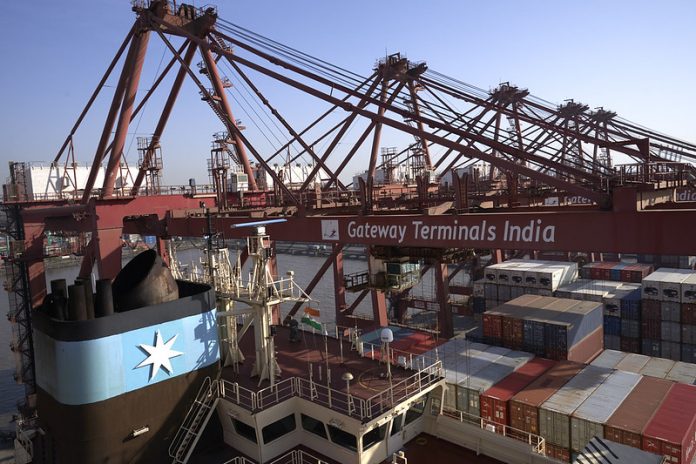APM Terminals Mumbai, India’s busiest container terminal handling facility, has installed the Navis N4 Terminal Operating System (TOS), the selected global standard for APM Terminals.
The new TOS will provide APMT Mumbai with the possibility to provide its customers with improved services, such as a track & trace interface and its website live feature truck turn times.
APM Terminals Mumbai, also known as Gateway Terminals India (GTI), will also be able to share its terminal data at container level, via the company’s API products – which provide live information feeds to customers.
The implementation processes have been carried out with the support of the company’s global in-house implementation team and with minimal impact on customer operations.
Patrick Heilig, responsible for the global TOS implementation team, believes that adopting a standardised TOS globally “enables the sharing of best practises for improved efficiency, the development of in-house expertise, centralised monitoring and support and faster, cost-effective global development of front-end applications for customers.”
The Global TOS implementation team is located around the world in different time zones, offering support 24 hours per day.
The TOS, which will now be part of an advanced, global application monitoring solution that is being rolled out across all of the APM terminals, is capable of spotting issues with performance before they start to negatively impact operations, said an APM Terminals’ announcement.
The Navis’ solution monitors end-to-end performance – including application architecture, servers, disk space, databases and user endpoints. The data is fed into one central dashboard, which is monitored all day long by the Maersk global Command & Control Centre in the United Kingdom.
“The dashboard operates using a simple traffic light system,” said David Pickup, APM Terminals global capability manager, who went on to explain, “Green means that no issues are detected. Amber flags have the potential to impact the business. Our goal is to fix these before they turn to red flags. Red flags indicate that the issue is probably already impacting our operations. This new solution enables us to identify any issues before the end user even notices that something is not working as it should.”







